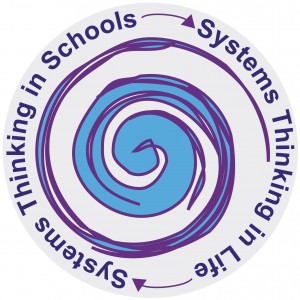Systems Thinking
Thinking systematically is not necessarily the way in which our brains normally work. Often we assume events take place separate from one another or that our actions do not directly affect anyone or anything else. This would be an incorrect assumption. In fact, most of the world around us can be considered a system. Our bodies, the school I attend, a football team, these are all systems. The definition of a system is, “an interconnected set of elements that is coherently organized in a way that achieves something” (Meadows, 2008). The three things that must take place for a system is that there must be elements, interconnection of these elements, and it must achieve something. When I was reading about systems thinking and read this definition I automatically assumed that everything can be considered part of a system, unfortunately I was once again wrong. The example that was used in the book was sand on a road which would not be considered a system because you can take the sand away or add more sand and either way, these two elements do not interact with one another. I look forward to learning more about systems thinking and the way in which we can solve some of the major problems going on in the world by looking at the entire picture; not just the different elements of a problem separately. Most importantly, the more that we learn about systems the better we will be able to identify the functions of a system and why it is important.
Public Transportation and Sustainability
We watched multiple videos in class about public transportation and the way it has improved in other countries over the years. One of the videos was about the public transportation system in China. For one particular area that had a high volume of traffic and cars in a busy city the solution was too add “bus only” lanes. These bus only lanes allowed for thousands of passengers to get to and from one side of the city to the other in a short amount of time. One of the main innovations that stuck out to me with this bus system is that they built elevated walk ways so that passengers could load on to the bus without going up and down the stairs; this small change saved time for the passengers and drivers. Another video that we watched had to do with bike rentals in Paris, France. Bikes are available at different stations all over Paris that way if you pick up a bike in one area you can drop it off at another. Velib, the company that started this bike sharing program has helped encourage people to use their bikes by making the first half hour free. They realized that to reduce the amount of traffic on the roads they needed an easy and convenient way for people to get around the city. Both the bus only lanes in China and this bike sharing program in Paris could be utilized in a city like LA. Los Angeles is known for its traffic and smog as a result of the amount of cars on the road. I believe that we need to rethink the way in which we travel in that city and therefore should adopt one or both of these alternate forms of commuting.



I disagree with Meadows on a few points that she makes in her book. The grain of sand is one point. And it doesn’t seem to make sense that she identifies things that are not of systems. Everything is!!! Even a grain of sand belongs to a system – albeit a very slow-moving system. The grain of sand was once part of a larger rock formation and is slowly making its way to the ocean. It will eventually cycle itself, even if that includes becoming part of a glass bottle, silicon chip, or concrete sidewalk.
LikeLiked by 1 person